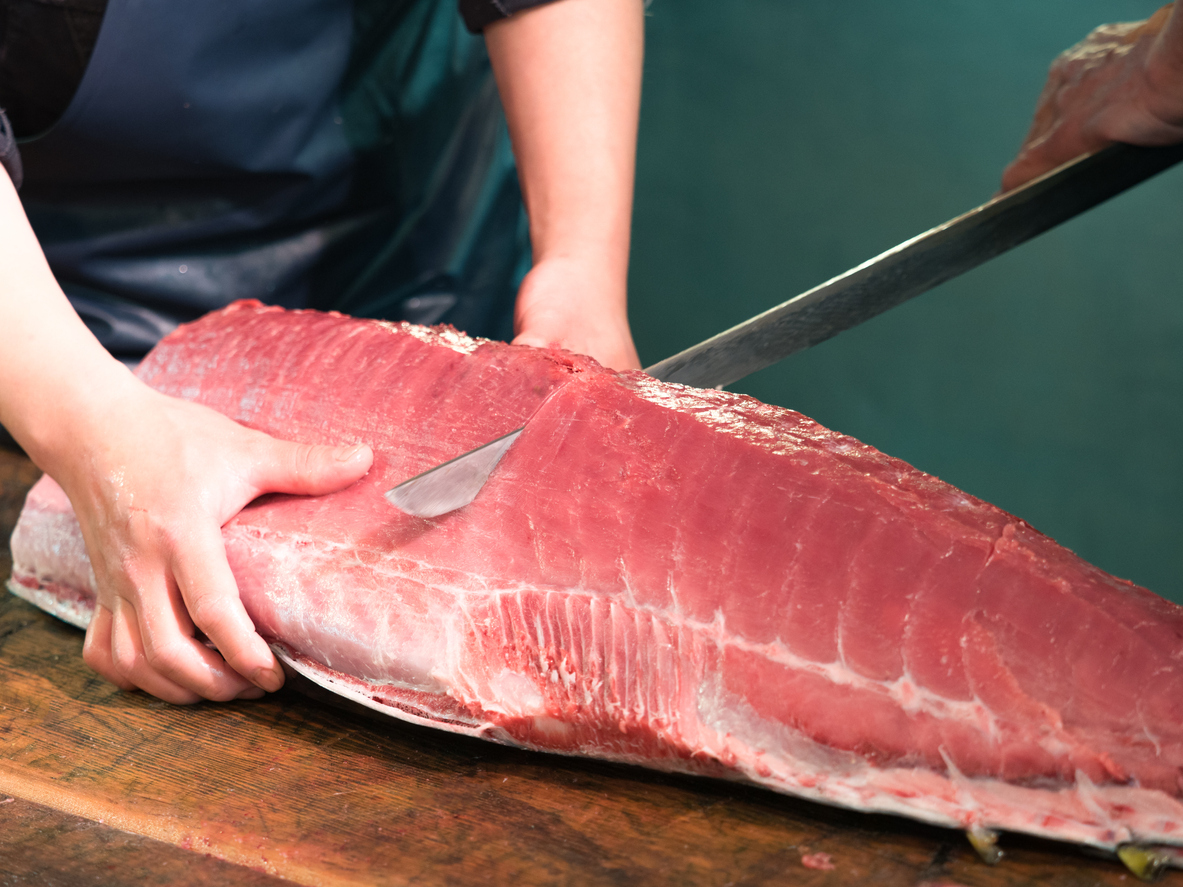Exploring the Rising Demand and Increasing Price of Blue Marlin Meat
Exploring the Rising Demand and Increasing Price of Blue Marlin Meat
Attention seafood enthusiasts and curious foodies alike! Prepare to dive deep into the fascinating world of blue marlin meat, where demand is soaring and prices are skyrocketing. Whether you’re a dedicated lover of all things seafood or simply intrigued by the rare delicacies that grace our plates, this blog post will take you on a riveting journey through the rising popularity and escalating costs of blue marlin meat. From unravelling its delectable flavors to uncovering the secrets behind its surging demand, join us as we unravel this culinary phenomenon that has captivated kitchens around the globe. Get ready for a tantalizing exploration into why blue marlin meat is causing mouths to water and wallets to empty – let’s embark on this gastronomic adventure together!
Introduction to the Blue Marlin and its Meat
Introduction to the Blue Marlin:
The Blue Marlin (Makaira nigricans) is a large, predatory fish found in tropical and temperate waters around the world. It is part of the billfish family, which also includes other popular game fish such as swordfish and sailfish. The Blue Marlin is easily recognizable by its distinctive long, pointed bill and sleek, streamlined body.
Known for their incredible strength and speed, Blue Marlins are highly prized by anglers for their thrilling fight when caught on a fishing line. However, they are also becoming increasingly sought after for their meat in the global seafood market.
The Meat of the Blue Marlin:
Blue Marlin meat is characterized by its firm texture and mild flavor with a slight sweetness. Its flesh ranges from pale pink to dark red depending on where it was caught and what it has been feeding on. This richly flavored meat is typically sold in thick steaks or fillets with no bones, making it easy to cook and consume.
In many cultures, especially in Hawaii and parts of Asia, Blue Marlin meat is considered a delicacy and is often served raw as sashimi or sushi. It can also be cooked using various methods such as grilling, broiling, baking or pan-frying. Due to its firm texture, it holds up well to high heat without falling apart.
Factors Contributing to the Rising Demand for Blue Marlin Meat
There are several factors that have contributed to the rising demand for blue marlin meat in recent years. These include changing consumer preferences, increasing global demand for seafood, and the decline of other popular fish species.
1. Shifting Consumer Preferences: As consumers become more health-conscious, there has been a shift towards a diet rich in lean proteins, including fish. Blue marlin is known for its high protein content and low levels of saturated fats, making it an attractive choice for health-conscious individuals. Additionally, blue marlin has a mild and delicate flavor, making it appealing to those who may not typically enjoy the taste of seafood.
2. Global Demand for Seafood: The growing population and rising prosperity in many countries have led to an increase in demand for seafood around the world. According to the Food and Agriculture Organization (FAO) of the United Nations, global per capita seafood consumption has increased significantly in recent years. This rise in demand has resulted in higher prices for many types of fish, including blue marlin.
3. Decline of Other Popular Fish Species: Overfishing and environmental changes have led to a decline in populations of several popular fish species such as tuna and swordfish. As a result, consumers are turning to alternative options such as blue marlin as a substitute or alternative source of their favorite seafood dishes.
Impact on Blue Marlin Population and Sustainability Concerns
The increasing demand for Blue Marlin meat has had a significant impact on the population of this species and raised concerns about its sustainability. As one of the most highly prized fish in the world, Blue Marlin has become a target for commercial fishing fleets and recreational anglers alike.
The overexploitation of Blue Marlin has led to a decline in their population, with studies showing that their numbers have decreased by more than 50% in some regions. This is due to several factors such as high fishing pressure, habitat destruction, and bycatch mortality.
Blue Marlin are apex predators, meaning they play a critical role in maintaining the balance of marine ecosystems. Their decline can have far-reaching consequences on these ecosystems, including disruptions in food webs and declines in other species dependent on them for survival.
Moreover, the decrease in Blue Marlin population also poses economic concerns for local communities that rely on these fish for their livelihoods. In many coastal regions where Blue Marlin are caught, they are an essential source of income and employment for small-scale fishermen. The depletion of this species could result in severe economic impacts for these communities.
In addition to the impact on populations and economies, there are also sustainability concerns surrounding the consumption of Blue Marlin meat. This fish is slow-growing and takes several years to reach maturity, making it vulnerable to overfishing. Furthermore, its reproductive cycle involves long migrations across vast distances, leaving them susceptible to disruptions caused by human activities such as pollution or climate change.
The Economics Behind the Increasing Price of Blue Marlin Meat
The price of blue marlin meat has been steadily increasing in recent years, causing some concern among consumers and fishermen alike. This rise in price can be attributed to a variety of economic factors that have impacted the supply and demand for this highly sought-after fish.
Firstly, it is important to understand the basic principles of supply and demand when discussing the economics behind the increasing price of blue marlin meat. As with any product, the price is determined by the balance between how much of it is available (supply) and how much people want to buy (demand). When there is high demand for a product but limited supply, prices will naturally increase.
One major factor contributing to the rising demand for blue marlin meat is its popularity as a delicacy in many countries around the world. In countries such as Japan and China, where seafood plays an important role in traditional cuisine, blue marlin is considered a highly prized ingredient. This has led to an increase in international trade of blue marlin meat, further driving up its price.
At the same time, there has been a decrease in the supply of blue marlin due to overfishing. Blue marlins are large predators that can weigh up to 2,000 pounds and are often caught using longline fishing methods. These methods have come under scrutiny for their negative impact on ocean ecosystems as they often result in significant bycatch – catching unwanted species along with targeted fish.
Alternatives to Consuming Blue Marlin Meat
Blue marlin meat has gained popularity in recent years due to its unique taste and texture. However, with the increasing demand for this fish, concerns about overfishing and sustainability have been raised. If you are looking for alternatives to consuming blue marlin meat, here are some options to consider.
1. Substitute with Other Fish Species
There are plenty of other fish species that offer a similar taste and texture as blue marlin. For instance, swordfish or mahi-mahi can be great substitutes for blue marlin in recipes such as grilled steaks or seafood kabobs. These fish are also known for their firm texture and mild flavor, making them suitable replacements in dishes that call for blue marlin.
2. Try Plant-Based Alternatives
If you are looking to reduce your consumption of animal-based products altogether, there are several plant-based alternatives that mimic the taste and texture of blue marlin meat. One popular option is jackfruit, which has a fibrous and flaky texture when cooked and can be used in dishes like fish tacos or sandwiches. Another alternative is tofu or tempeh, which can be flavored with spices and sauces to create a delicious mock-fish dish.
3. Opt for Sustainable Seafood Choices
If you still want to enjoy the taste of blue marlin but want to make more sustainable choices, consider opting for other types of seafood that have been harvested responsibly.
Ethical Considerations and Conservation Efforts
Ethical Considerations:
The rising demand and increasing price of blue marlin meat have raised ethical concerns among conservationists and animal rights activists. Blue marlins are large, highly migratory fish that can grow up to 14 feet in length and weigh over 1,500 pounds. They are prized for their delicious taste and firm texture, making them a popular choice in high-end restaurants and seafood markets.
However, the demand for blue marlin meat has put significant pressure on their populations, leading to overfishing and depletion of the species. This has resulted in severe consequences for not just the blue marlins but also the entire marine ecosystem.
One ethical consideration is the impact on other marine species that rely on blue marlins as a food source. As top predators in the ocean, removing large numbers of blue marlins from their natural habitat can disrupt the balance of marine life. It can lead to an increase in prey species, which could result in competition for resources and potential declines in other fish populations.
Another concern is bycatch – the unintentional capture of non-targeted species such as sea turtles, sharks, dolphins, and other marine animals – during commercial fishing operations targeting blue marlin. These animals often get entangled or trapped in fishing gear meant for catching blue marlin, causing injury or death. Bycatch is a significant threat to many vulnerable marine species and violates ethical principles of humane treatment towards animals.
Conclusion: Navigating the Complexities of Blue Marlin Meat Consumption
Conclusion: Navigating the Complexities of Blue Marlin Meat Consumption
Blue marlin meat is a highly sought-after delicacy, with its demand and price on the rise. However, as we have discussed in this article, there are many complexities surrounding the consumption of this fish.
On one hand, blue marlin meat provides important economic benefits to fishing communities and contributes to global food supply. Its high nutritional value and unique taste make it a popular choice for seafood lovers. But on the other hand, there are concerns about overfishing and negative impacts on ocean ecosystems.
As consumers, it is important to be aware of these complexities and make informed choices when purchasing and consuming blue marlin meat. Here are some key points to keep in mind:
1. Sustainability: Due to its slow growth rate and vulnerability to overfishing, blue marlins are considered an endangered species in some areas. It is crucial to only purchase blue marlin meat from sustainable sources that follow responsible fishing practices.
2. Traceability: With increasing concerns about food safety and fraud in the seafood industry, it is important to know where your blue marlin meat comes from. Look for labels or certifications that ensure traceability back to a specific source or fishing method.
3. Alternatives: In light of sustainability concerns surrounding blue marlins, there are now efforts towards promoting alternative options such as farmed fish or more sustainable wild-caught species like swordfish or tuna.








Comments are closed.